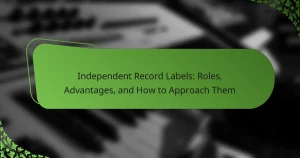Choosing the right music distribution service is crucial for maximising your reach and revenue. This article compares key features like digital distribution, royalty collection, and marketing tools. It also explores pricing structures, distribution reach, and unique attributes of various platforms. Understanding these factors will help artists make informed decisions about their music distribution needs.
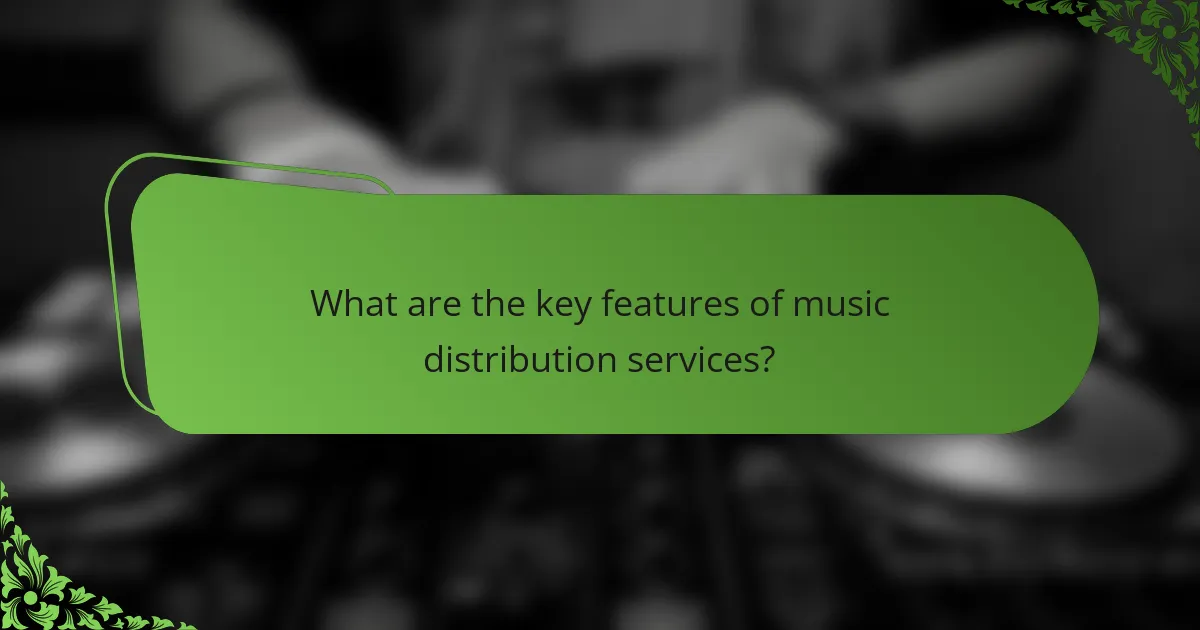
What are the key features of music distribution services?
Music distribution services offer key features that enhance the music release process. These features include digital distribution to major platforms, royalty collection, and marketing tools.
1. Digital Distribution: Services ensure music reaches platforms like Spotify, Apple Music, and Amazon Music.
2. Royalty Collection: They manage the collection of earnings from streams and downloads, ensuring artists receive payments.
3. Marketing Tools: Many services provide promotional resources, such as social media integration and playlist pitching.
4. Data Analytics: Artists gain insights into listener demographics and streaming trends, helping them make informed decisions.
5. Customisable Release Options: Some platforms allow for pre-release strategies and timed releases to maximise impact.
These features streamline the distribution process and empower artists to manage their music effectively.
How do music distribution services support independent artists?
Music distribution services empower independent artists by providing essential tools for reaching wider audiences. These services offer platforms for streaming, digital sales, and marketing support, enabling artists to monetise their work effectively.
Key features include global reach, which allows artists to distribute their music across various platforms like Spotify and Apple Music. Cost structures vary, with some services charging a flat fee per release while others take a percentage of earnings.
Additionally, many services provide analytics, helping artists understand their audience and improve engagement. Unique attributes, such as personalised marketing strategies, can further differentiate these services, enhancing an artist’s visibility in a competitive market.
Which platforms are most popular for music distribution in 2025?
In 2025, popular music distribution platforms include DistroKid, TuneCore, CD Baby, and Amuse. These services vary in pricing, features, and ease of use.
DistroKid is known for its unlimited distribution model at a flat annual fee, making it cost-effective for many artists. TuneCore charges per release but offers extensive analytics and promotional tools. CD Baby provides both digital and physical distribution options, catering to diverse artist needs. Amuse stands out with its free distribution model, appealing to emerging musicians.
Each platform has unique attributes that cater to different artist requirements, ensuring a range of options for music distribution.
What are the common pricing models for music distribution services?
Common pricing models for music distribution services include revenue share, flat fee, and tiered pricing. Revenue share typically takes a percentage of sales, often around 15-30%. Flat fee models charge a set amount annually or per release, providing predictability. Tiered pricing offers different packages based on features or distribution volume, allowing for scalability. Each model has unique attributes that cater to different artist needs and revenue strategies.
How do music distribution services handle royalties and payments?
Music distribution services typically handle royalties and payments through automated systems that track streaming and sales. They calculate earnings based on the number of streams or downloads and distribute payments to artists according to their agreements. Most services provide detailed reports, allowing artists to monitor their income. Some unique features include varying payout rates and additional fees for certain distribution channels.
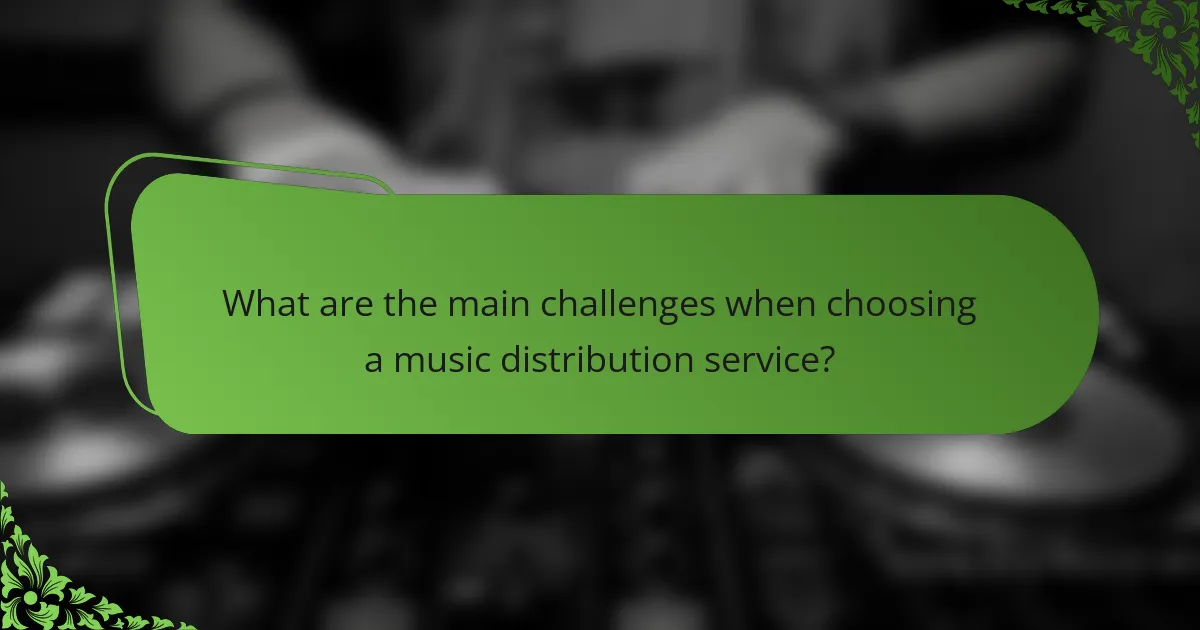
What are the main challenges when choosing a music distribution service?
Choosing a music distribution service involves several challenges. Key issues include understanding pricing structures, navigating varying distribution reach, and assessing additional features like marketing tools and reporting analytics.
Pricing can be complex, with some services charging upfront fees while others take a percentage of royalties. Distribution reach varies significantly, as some platforms may only cover specific regions or stores.
Additional features, such as promotional support and detailed analytics, are essential for maximising exposure and revenue. Evaluating these factors helps ensure the selected service aligns with an artist’s goals and needs.
What factors should artists consider when comparing services?
Artists should consider costs, distribution reach, royalty rates, and additional features when comparing music distribution services. Cost structures can vary significantly, influencing overall profitability. Distribution reach determines how widely music is available. Royalty rates affect earnings per stream or sale. Additional features, such as marketing tools and analytics, can enhance an artist’s promotional strategy. Evaluating these factors ensures informed decisions that align with an artist’s goals.
How do different services address customer support and user experience?
Music distribution services vary in how they address customer support and user experience. Some platforms offer 24/7 support, while others provide limited hours. User experience is enhanced through intuitive interfaces, and some services include analytics tools for artists. Notably, unique attributes such as personalised assistance differentiate premium services from basic ones. Additionally, rare features like community forums or educational resources can significantly improve user engagement and satisfaction.

Which unique features set music distribution services apart?
Music distribution services differ through unique features like pricing models, distribution reach, and artist support. Some platforms offer free distribution, while others charge fees or take a percentage of royalties. Exclusive partnerships with streaming services can enhance visibility for artists. Additionally, robust analytics tools provide insights into listener demographics and engagement. Unique features such as promotional support and direct-to-fan sales options further distinguish these services, catering to diverse artist needs.
What exclusive partnerships do certain distribution services have?
Certain music distribution services have exclusive partnerships that enhance their offerings. For instance, DistroKid partners with TikTok, allowing artists to distribute their music directly to the platform. CD Baby has exclusive deals with SoundCloud, providing artists with unique promotional opportunities. TuneCore collaborates with Instagram for music sharing features. These partnerships can increase visibility and access for artists, making distribution services more appealing.
How do services differ in terms of global reach and market penetration?
Music distribution services vary significantly in global reach and market penetration. Some platforms excel in international markets, while others focus on niche audiences. For instance, major players like DistroKid and TuneCore offer extensive global distribution, reaching numerous streaming platforms worldwide. In contrast, smaller services may target specific regions or genres, limiting their overall market penetration. This differentiation can influence an artist’s exposure and revenue potential.
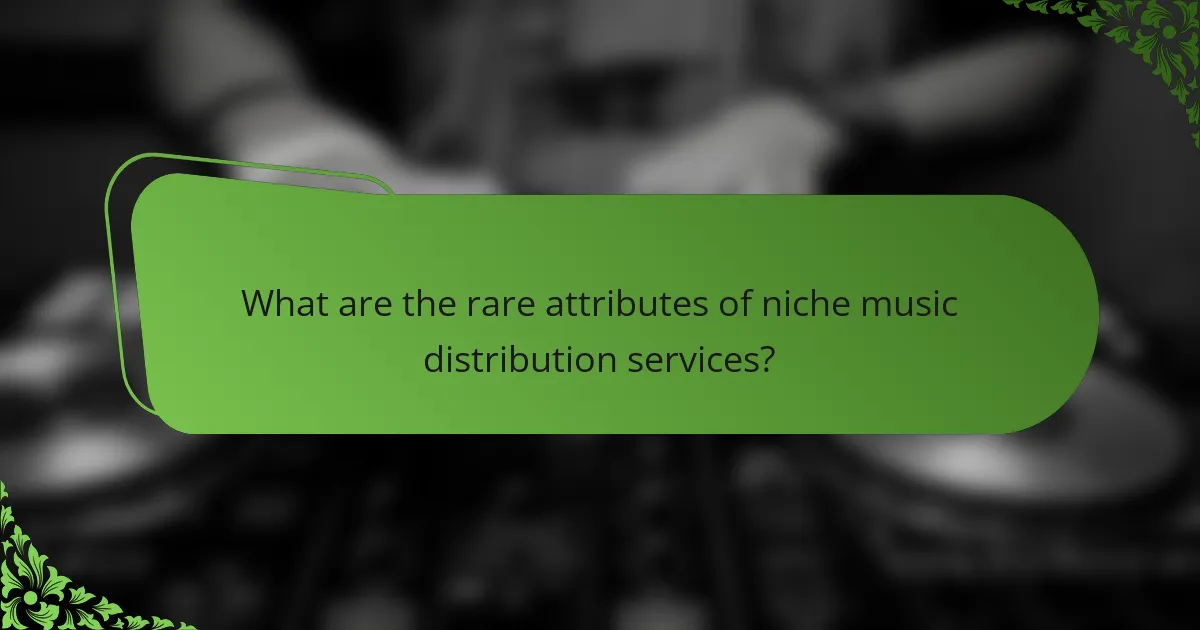
What are the rare attributes of niche music distribution services?
Niche music distribution services often feature rare attributes that set them apart from mainstream options. These include personalised marketing support, unique revenue-sharing models, and specialised genre targeting. Some services may offer enhanced analytics tools that provide deeper insights into listener demographics. Additionally, exclusive partnerships with niche platforms can help artists reach specific audiences more effectively.
What specialised services exist for specific genres or demographics?
Specialised music distribution services cater to various genres and demographics, offering tailored features. For example, platforms like DistroKid target independent artists with fast distribution and low fees. CD Baby provides services for both physical and digital distribution, appealing to diverse music styles. TuneCore focuses on global reach, making it suitable for international artists. Services like Amuse offer free distribution, attracting emerging musicians. Each service presents unique attributes, such as revenue splits and marketing tools, enhancing accessibility for specific user needs.
How do some platforms incorporate advanced analytics for artists?
Some platforms utilise advanced analytics to provide artists with insights on audience engagement and streaming trends. These analytics often include real-time data on listener demographics, geographic distribution, and song performance metrics. For instance, services like DistroKid and TuneCore offer dashboards that visualise key statistics, helping artists make informed decisions about marketing and distribution strategies. Additionally, platforms may leverage machine learning algorithms to predict future trends and recommend personalised promotional tactics.
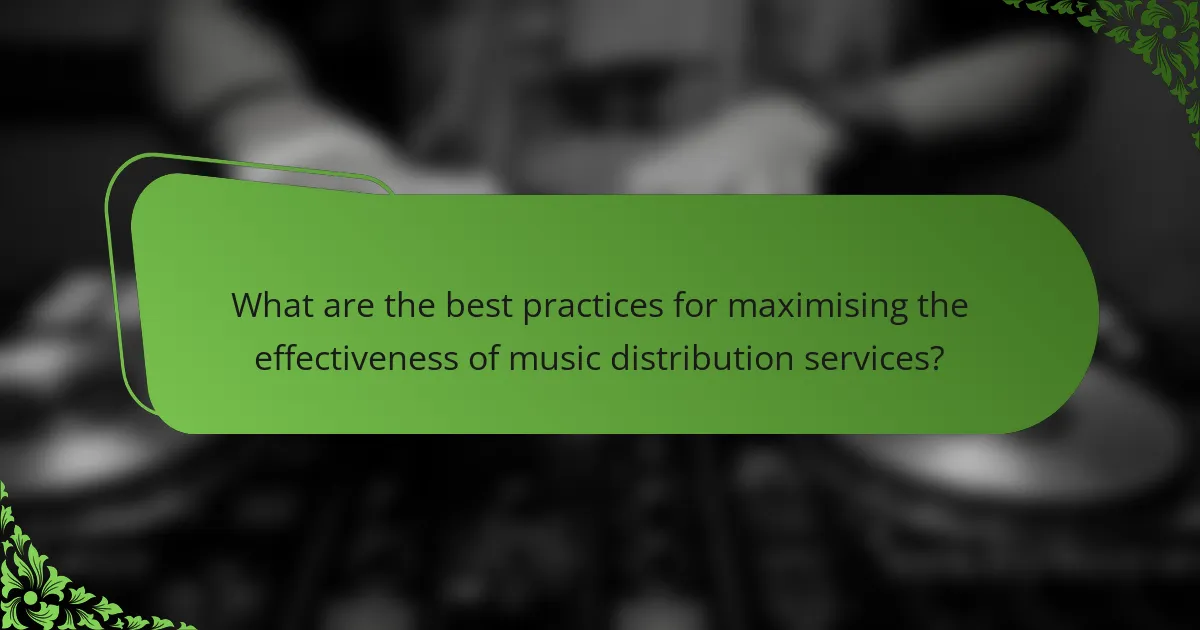
What are the best practices for maximising the effectiveness of music distribution services?
To maximise the effectiveness of music distribution services, focus on selecting the right platform, understanding pricing structures, and utilising promotional tools. Research various services to compare their distribution reach, royalties, and user support. Leverage analytics provided by these services to track performance and optimise marketing strategies. Engage with your audience through social media and email marketing to enhance visibility and drive streams.
How can artists optimise their release strategy with distribution services?
Artists can optimise their release strategy by leveraging music distribution services effectively. These services provide essential tools to manage releases, reach wider audiences, and maximise revenue.
Key features to consider include royalty collection, digital store access, and promotional tools. For example, services like DistroKid and TuneCore offer quick distribution to major platforms with varying costs and features, helping artists choose the best fit for their needs.
Understanding the costs associated with these services is crucial. Some platforms charge annual fees, while others take a percentage of sales. This knowledge enables artists to select a service that aligns with their financial goals and expected income.
Finally, utilising analytics provided by these services can inform future release strategies. By analysing listener data and sales trends, artists can refine their marketing efforts and enhance their overall impact in the music industry.
What common mistakes should artists avoid when using music distribution services?
Artists should avoid common mistakes such as neglecting to read terms, underestimating costs, and failing to promote their music effectively. Understanding these pitfalls enhances the use of music distribution services.
First, artists often overlook the fine print in distribution agreements, which can lead to unexpected fees or unfavourable terms. Second, many underestimate the costs associated with distribution, which may include annual fees, percentage cuts, or additional service charges. Lastly, failing to actively promote their music can result in poor visibility, as distribution alone does not guarantee audience reach.
By being aware of these mistakes, artists can better navigate the music distribution landscape and maximise their success.
